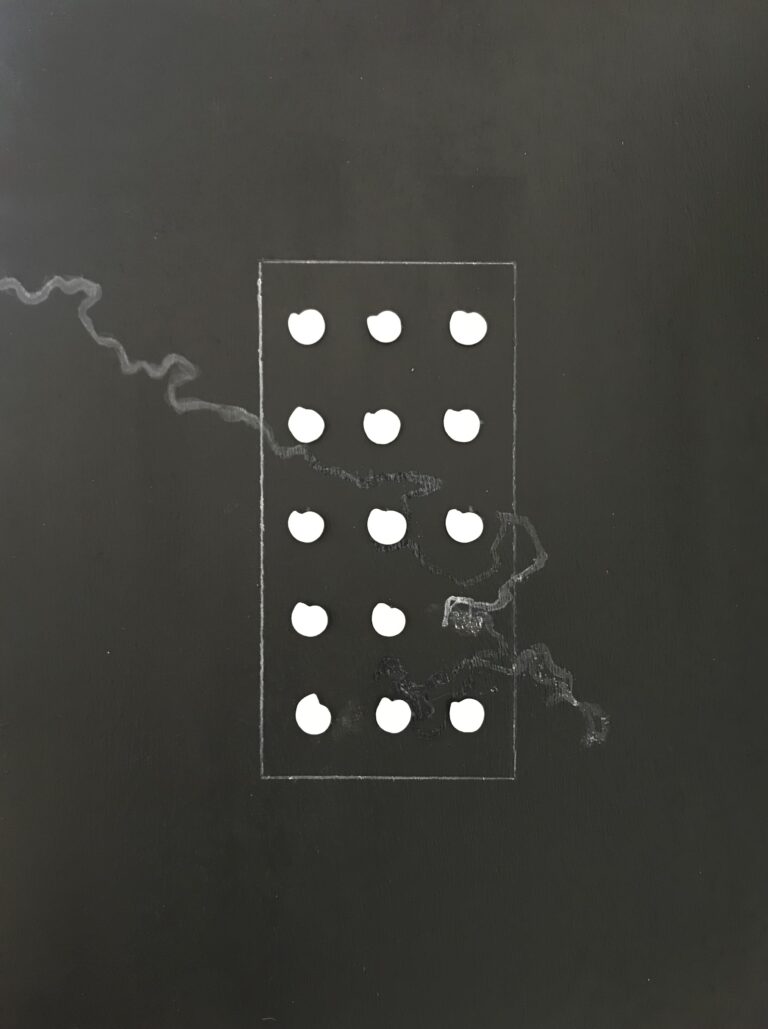Getting to know and understanding the practice of Oksana Sokolova.
Ilona Keilich, the gallerist joins Oksana in her studio in Nice, southern France, unraveling the secrets behind her artistic process, exploring the stories behind her masterpieces, and discovering the essence of what drives her boundless passion for creation and research based art.
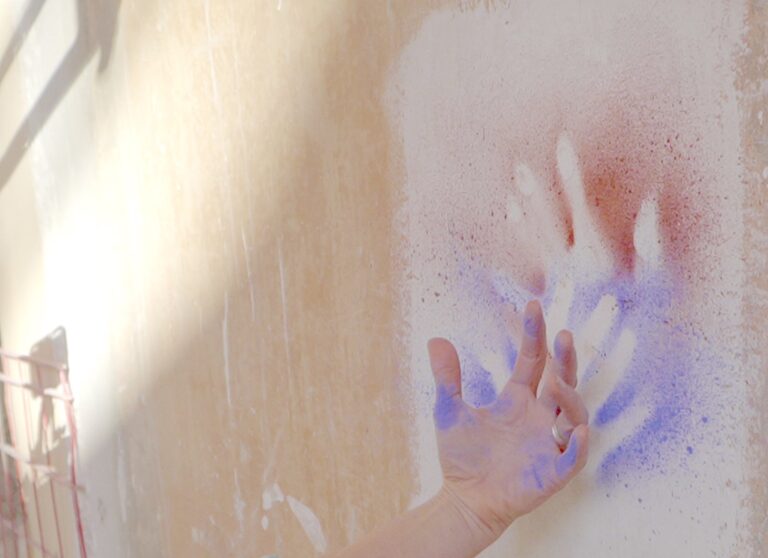
You are trained architect as well as artist. How does the mix of these two various disciplines influences your artistic practice?
Ever since I was very young, my heart has floated between art and architecture. Both disciplines call for creativity, but the architectural profession requires you to keep your feet on the ground due to a great deal of responsibility.
I’m fascinated by buildings, by the atmosphere they are capable of creating, but above all by the history, the stories that are written on their “skins”. In addition, I’m developing a body of visual work based on more freeform subjects, which address my questions about the progression of time, the place of Man in Nature, the freedoms…
I’ve been working as an architect since 2011, but it’s only since 2019 that my decision to combine these two activities has led me to give more space in my life to art. My architectural experience brings a great deal of rigour to the development of my art projects, while my artistic endeavour allows me to explore my creativity even further.
You work with many different mediums. Not only you use established disciplines such as photography but you also create new ones such as plaster paintings or installations. What drives you and what inspires you in finding the new ways of expression?
When I start working on a single art piece or a series of artworks, I never think about the technique I’m going to use. I leave myself the time to immerse myself in the emotions and feelings that the context provokes in me, until the technique to be used becomes obvious. I feel totally free in my choice of medium, because the world is not limited to a single language. I give myself the opportunity to speak several languages at once to tell a story.
Each technique, as well as each language, has its own subtleties that allow me to convey a unique story. To restrict myself to a single technique would be to limit my experience of the world.
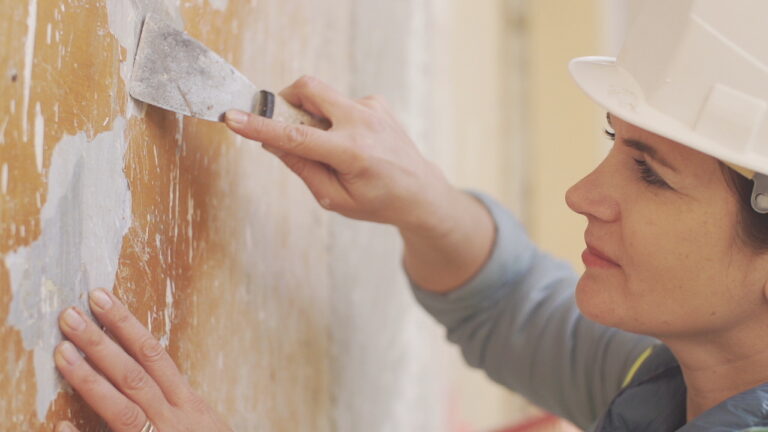
Your multi-disciplinary work is always based on thorough research. Why this part of the conceptualisation phase is so important to you? What role does research play in your creative process, especially when exploring new disciplines?
I firmly believe that an artist is first and foremost a researcher. Like any researcher, he discovers the world, knowing that this search has no end, since the world is constantly evolving. Seeking infinity may seem like an absurdity that has no end in itself. Yet, every step in an artist’s search is a claim about the state of the world. The world wants you to be in a state of permanent research. Without the research creative life would not be possible for me.
The project with snails seems to be loaded with political criticism. How do you wish these works influence the viewers?
The snail project isn’t so much a political rather a social critique. It’s true that the two are often closely linked, but I don’t think talking about politics does anything or brings you anywhere. For someone who wants to change things, talking politics isn’t enough. You have to act, and be fully committed. That’s not what I am trying to achieve here.
On the other hand, I think it’s important to talk about social issues, because we all live in a society, and it’s no longer a question of expressing an opinion, but of expressing one’s experience of the world in which we live.
The “Snails” project recounts the experience of a person who holds power. Are people’s lives of equal value to those who hold power and those who are subject to it? Are lives of power holders and their subjects rated equally? The question of freedom is at the heart of this project. Any freedom can be restricted if a third party seeks to do so. For my part, I wanted to explore this subject from the point of view of the “manipulator”, or “superior authority” as I call it.
Indeed, everyone has experienced a lack of freedom at least once in their life. What I’m particularly interested in here are the feelings not of the person being manipulated, but of the one who’s manipulating, who’s “in charge”. During an 8-day experiment, I tried to observe myself while manipulating free beings – snails, to force them to draw a picture with their drool on a support I had created for the purpose. This project has several possible interpretations, bearing in mind that the restriction of freedoms is something that is very present in our society, and can manifest itself in different areas of our lives.

Why did you choose snails to ‘work for you’? What role do these creatures play in your creative process?
The “Snails” project was born of a strong emotion I felt during a stay in Provence. One day, while observing nature, I was surprised by the sight of snails climbing on top of each other to form large clusters. Curious, I unhooked a few and arranged them in a very regular pattern on a piece of wood. I thought the arrangement was pretty and took a few photos. But after a few minutes, the snails started to move and my whole arrangement fell apart. It was then that I realized that these were living beings, totally free in their desires and movements, and that they couldn’t be directed according to my wishes.
The “Snails” project is an allegory of mass manipulation. For me, snails are the ideal representation of a mass of individuals over whom I or anyone else can exercise our power.
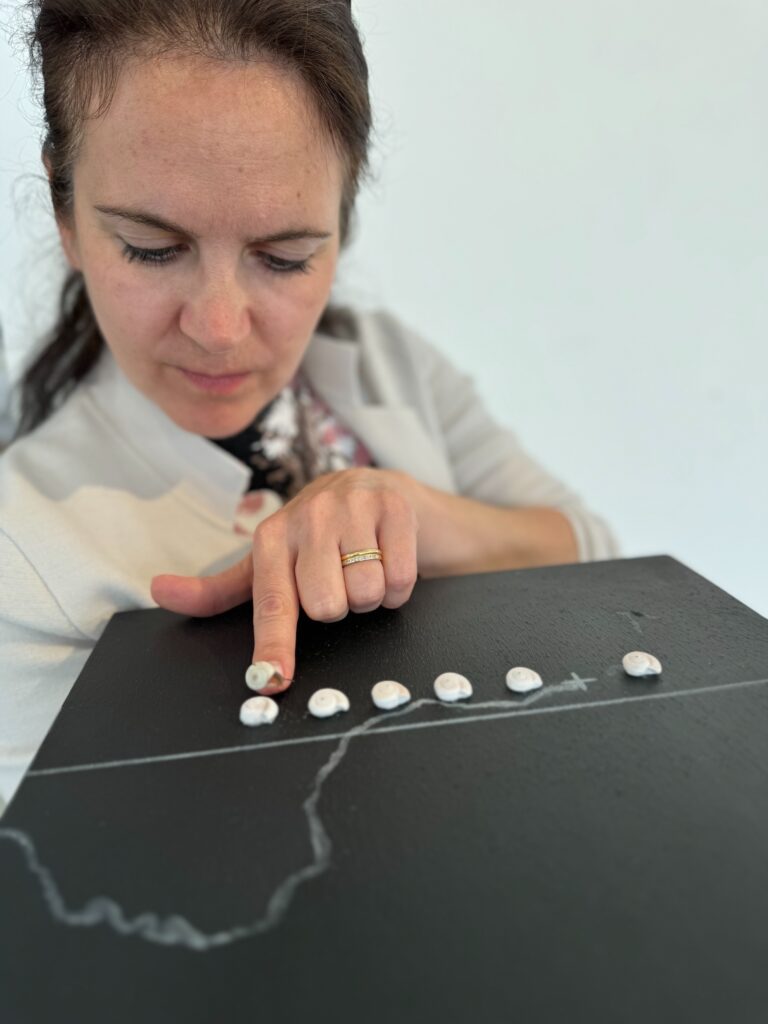
Your project ‘Skins’ has been part of the massive renovation process of the stunning Carlton Hotel in Cannes, France. What has inspired you to use the layers as historical element?
You might think that there are no links between my various projects. Yet despite the diversity of the subjects I deal with, my works have one thing in common: they’re all about surfaces. The world around us, whether it’s a wall, a blade of grass on which a snail leaves its mark, or the bark of a tree, is made up of surfaces.
The “Skins” project is particularly about the surfaces of the buildings I explore. The skin of buildings is like human skin: it retains all traces of the past. Time leaves its mark on the surface, which is covered by successive layers of paint, plaster and new materials that cover up the old ones. The “Skins” project, a commission of 16 works for the Hôtel Carlton Cannes, speaks of the passage of time, while highlighting old materials that were rediscovered during renovation work. The memory that buildings keep on their “skins” is a work that takes up a lot of space in my research.
In your artistic endeavor you are also using photography and play with light as yet another mean of expression. What role does this project play in your oeuvre?
The discovery of the medium of light is a crucial step in my artistic career. I discovered it one day by accident. It landed on a sheet of paper on which I was about to draw. I was impressed by the intensity of the emotion it stirred in me, and had to put down my pencil just to observe it… Shadows and light interacted on the white sheet, and I suddenly I felt very small. The big question, which I still ask myself today, arose: what can I as an artist contribute to this world that has always existed and will continue to exist without me? Do I really have a say? This work on light is simply an acknowledgement of the beauty of the world around us. It’s a lesson in humility that shows me the tiny place I occupy in this world, and above all guides me in my artistic process, with only one concern: to find my place in it without compromising its balance.
How do you believe your background or experiences have influenced your ability to work across various artistic disciplines?
Our life experiences are the foundation of our identity, our originality as a person. Our experiences help us to make the world we live in our own, knowing that it is in constant motion and never stands still. The accumulation of experiences is then like a reservoir that we create within ourselves, but which sometimes fails to synchronize with this moving world. That’s why I try not to get weighed down by it, while at the same time trying to keep a “fresh”, sometimes naive view of the world.
As Picasso said, “It took me my whole life to learn how to draw like a child”. I think the most difficult task for an artist is to take an advantage of his experience to perfect his plastic work, but at the same time to free himself from it in order to preserve his innocent view of the world. If one day I could combine the two, I could consider myself an accomplished artist.
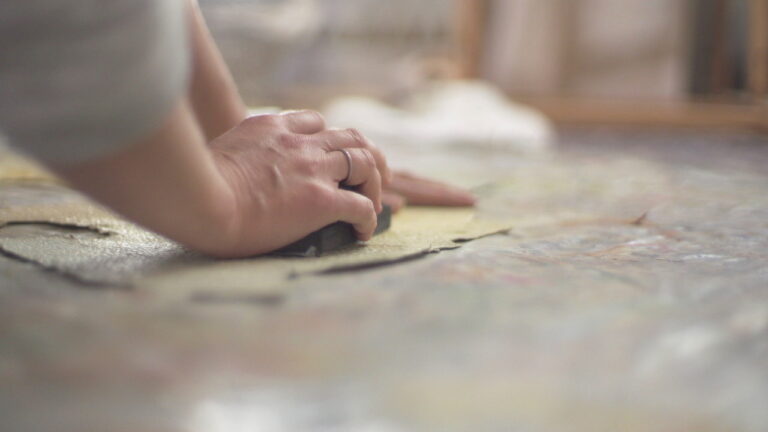
While working with so many different mediums how do you navigate the challenges of switching between different artistic mediums?
Any limit that stops us in our tracks is a limit we set for ourselves.
In my artistic research, the medium is not an objective for me, but a way of expressing myself. I have no difficulty in manipulating different techniques, since each one meets the precise needs of my work or a project at a specific moment in time. Perhaps that’s where the question of experience comes in: the more you experiment with any new medium, the more comfortable you become using it. I feel free in my artistic expression and I take care to preserve this freedom, which is important to me in discovering and processing the world.
A duo exhibition Traces of Nature with Oksana Sokolova’s installation involving live snails will open at EXOgallery in May 2024.

